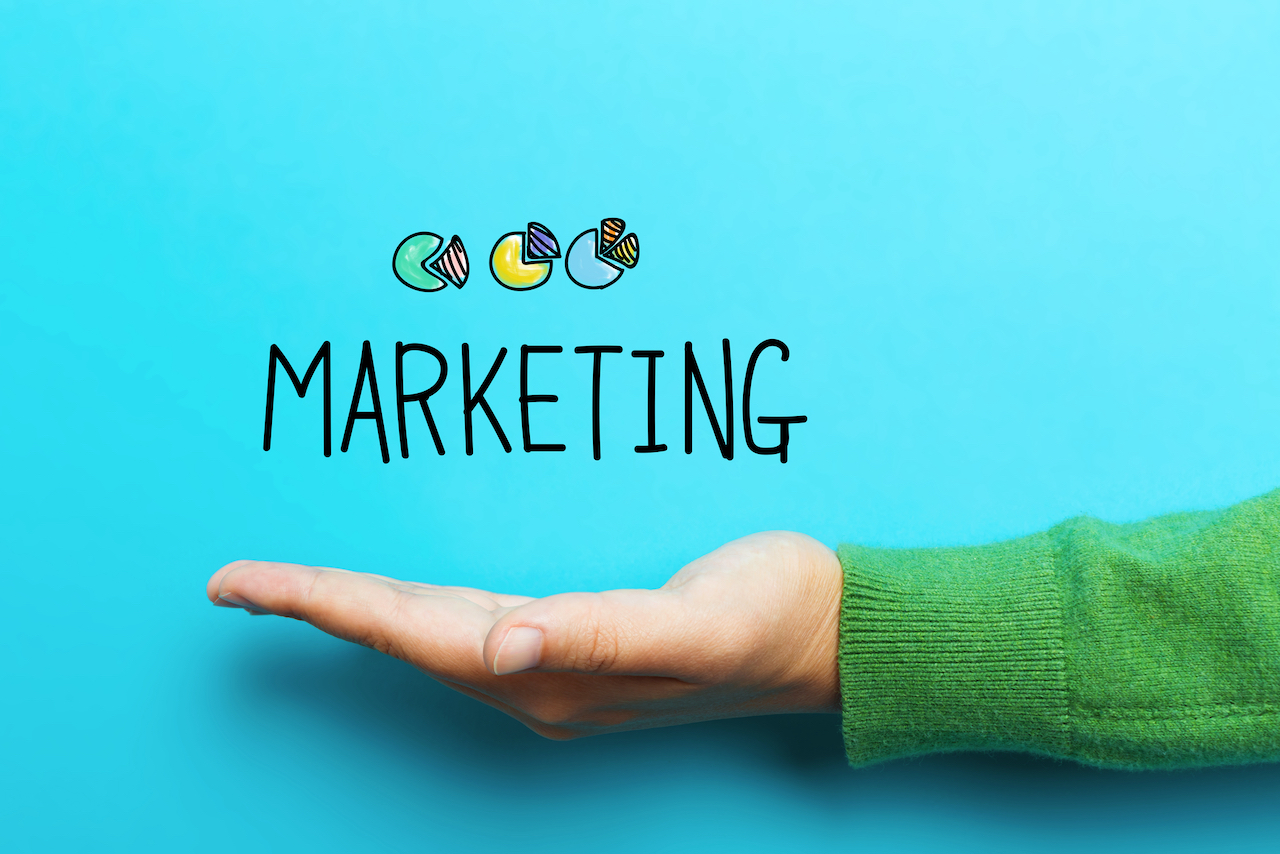Table of Contents
Key Marketing Strategies
What's A Marketing Strategy?
The 8 "Ps" of Marketing

Key Marketing Strategies
Whether you are starting a new business or running a current one, laying out a successful marketing strategy can seem like a daunting task. Knowing how to effectively reach and engage your target audience is crucial for success. However, even if you’ve been in the game for a while, the constantly evolving landscape of marketing tools and techniques makes it easy to become overwhelmed and confused about where to start.
It would be impossible for me to suggest a single key marketing strategy or plan of attack that would apply to all businesses. It wasn’t long after working in the marketing world that I realized, there is no cookie-cutter marketing plan. Every business has unique products, services, and goals that in turn present different challenges. I did however discover eight essential marketing concepts or eight key marketing strategies that do apply to any business. In this article, we’ll explore these eight key strategies as well as some tips and insights that can help you build a marketing strategy with confidence.
What’s a Marketing Strategy?
When I think of a strategy, I think of a scheme or plan or action to win a battle. Although running a business can sometimes feel like fighting a battle, I will leave that subject to another blog. For now, I will take a minute to define strategy as it related to business and marketing:
A marketing strategy is a plan of action that is designed to achieve a business goal or objective.
A marketing strategy would be a high-level plan that outlines the broad marketing actions that should be taken to achieve a desired outcome, an example of an outcome would be “to sell out a certain product.” A marketing strategy would take into account a business’ resources, strengths, and weaknesses, as well as external factors such as competition or market trends. It would lay out the marketing steps that must be taken to maximize the business’s chances of success. A typical marketing strategy would include a clear vision, mission, or goal. “To sell more goods” is not necessarily a clear goal. “To double sales in Q2”, could be. Working backward from the goal, an executable plan can be created of what it would realistically take for a business to reach the goal or objective. A marketing strategy could also include timelines and metrics to measure progress and success.
Avoid The Marketing Soup
Most businesses know they need to do some form of marketing but with so many options not everyone knows which marketing action or combination of actions will produce the best results. Here’s where designing and following a marketing strategy is critical. The idea is to achieve results while avoiding a marketing soup.
If you’ve never heard of a marketing soup it’s because it’s something that I made up. Have you ever of the everything but the kitchen sink soup? That’s where you pretty much throw anything and everything into a pot and make a soup. Well, imagine the same concept but applied to marketing. A marketing soup is where a business uses its marketing budget to do a bit of anything and everything, without any kind of organized plan or marketing strategy. The results are not always great and it’s often a hit-or-miss approach to marketing.

Key Marketing Strategies: The 8 “Ps” of Marketing
Product
The first of the eight Ps of marketing is the product. This is what you sell. Without a service or product you don’t have a business so naturally it’s the first one. This first P includes both actual and tangible goods and services that can be delivered.
If done correctly, your product can become a marketing tool in itself and has the potential to turn customers into long-term brand advocates.
A funny but true example of how a product itself is a marketing tool would be a lot of the “as seen on TV” products. As silly as they may seem sometimes, they are successful because they are creative and solve many day-to-day problems that people have. By making useful and innovative products, their products are their key marketing strategy.
Another factor here is the design, look, and feel of of the product. If you are launching a product into a competitive market, you can use design to give your product an edge on your competitors who make the same or similar products. By making it look nicer or function better or slightly different, your product becomes marketing in itself. An example of this is when Frigidaire launched fun-colored kitchen appliances. They didn’t change the appliances or make them function differently, they simply offered a new line of fun colors that brought color and life to a kitchen. Their products immediately gained an edge on other kitchen appliance companies that had two or three “boring” colors.
When your product is a service, your product can become marketing if you develop a way to offer it better or different then it usually is. It’s one thing to try and deliver excellent service and prioritize customer satisfaction, but one look at your competition will show you that they all talk about how their service is “better” or the “best.” Some well-known examples of how a service captured a market include Apple’s iPhone, Tesla’s Electric Car, Netflix Streaming, Air B&B, Uber, and Spotify Music Streaming.
As you can see from these examples, each company brought something new to the table and figured out a new and better way to deliver an existing service. Another factor here is that each company made its services more accessible to people. The iPhone allowed people to bank from their phones, removing the need to go to a computer or bank. Uber allowed people to call a taxi from virtually anywhere. Although having grown up in the 90s, I have many awesome memories of going to the video store, Netflix killed the video-store culture by removing the need to leave your house and then return it three days later.
If your product is a service, you don’t necessarily need to reinvent the wheel or come up with some Earth-shattering change, but it shows you that if you can figure out a better and easier way for a service to be delivered that in turn makes it more accessible, you can turn your product itself into a marketing strategy.

Price
One of the most critical aspects of marketing your product is price, hence it’s the second P. The price you establish for your product or service has a massive ripple effect.
Pricing doesn’t only impact your profitability, it also influences who your potential customers are, customer satisfaction, and ultimately whether people will buy your product or not. And, as we go through these Ps, you will see how each P ties together to build the ultimate marketing approach.
Now, when I say pricing as a marketing strategy I don’t just mean lowering your prices to make them less than your competition. Pricing has everything to do with your product, and your target audience, and yes of course competition is also a factor. For example, if you set your pricing too low your product could suffer. If you charge too much, customers may disregard you and look for something more affordable.
At Key Marketing Strategies, we try to offer very competitive yet affordable pricing for our website services. In fact, it took me about two years to develop a way to deliver awesome websites at a mid-market price. But I’ll never forget the day a customer went with one of my competitors because my price was too low. He wanted something high-end, and while of course, we could build it, he went with another company that cost more. Don’t worry! We did not increase our prices as a result, but this was a perfect example of how pricing has a major role in marketing and that trying to offer the lowest price isn’t always the best marketing approach.
Going back to the Netflix example, in 2022 Netflix lost over 1 million subscribers. It wasn’t because of competition, it wasn’t because of a lack of entertainment value, it was because they had increased their prices at a horrible time. I myself canceled my Netflix account and picked up Disney+. It’s not that I thought Disney had better content, although I’m really digging some of their series, it was because I was annoyed by yet another increase in Netflix pricing.
Costco is another great example of how pricing is used to market products. Costco uses what’s called volume pricing. By buying more of one thing, you get a better price. Volume pricing is slightly different than tiered pricing, which gives you a bigger discount the more you buy. An example of tiered pricing would be 2 for $10, 5 for $20, and 10 for $35. Tired pricing works well for software systems or service-based products that try to capture recurring income. Another very common pricing approach is to offer a free trial. Many companies use this pricing strategy as a way to capture potential customers.
If you want to know a bit more about pricing strategy and how pricing can be used to market your product, I found a cool article by NetSuite that talks about eight different pricing strategies.
If you want to figure out some simple steps you can take to price out your product, I found an article written by Shopify that gives these three simple steps to pricing a product, however, keep in mind that Shopify’s article doesn’t really take into account market research, competition research, or finding out what your target audience would be willing to pay for your product. These are all factors that should be factored into pricing when you intend to make your price a marketing strategy.
Place
The third P is place. Where are you going to sell your products or services, in other words, where can they be purchased and experienced?
The product or service you offer of course has a role in deciding where you will sell it or how you will offer it to your customers but there is another very important thing to consider when deciding your place or places.
One of the most crucial aspects of marketing your product through “place”, is to determine where your target audience is. Where do they shop for similar products, where and how can they experience your products or services, and so on?
Here, I have another funny example. I have a pair of sunglasses that every time I wear I get compliments. And every time someone compliments me I tell them the same thing, “Guess where I bought them?” Most people guess the mall or a sunglass store, many people also think they’re expensive because they look great. Nope, about two years ago I was shopping at Wholefoods and I went to buy a few steaks for a get-together. There in the meat aisle was a display of sunglasses! At first, I thought, who puts sunglasses in the meat aisle, but that thought didn’t last long once I was at the cash register buying two pairs!
Although it worked, the above example is more amusing than useful since it’s not really the best example of where to place products.
Probably a better example of this is a client of mine who equipped a trailer with car-washing equipment. He would take his car washing kit to local businesses and wash cars in the business’ parking lot for the employees while they worked. Naturally, most employees bought a car wash because they could continue work or enjoy their full lunch break instead of figuring out when to wash their car. Visiting a business once a month, all he needed were 30 clients to keep him busy all month long. This is a great example of how Place became his primary marketing strategy.
More common examples of place would be whether to sell your products in a retail store or online. If you sell on Amazon, should you also have an online store where people can learn more about your products or purchase them from your website? If you are a doctor’s office, should you also open a telehealth service for follow-up visits that could be done over the phone, saving time for you and your patients?
Promotional channels can also be considered a place when it comes to marketing. How and where should you promote your products? Some time ago I did extensive market research on a new health practice where I found a high percentage of their target audience were likely to respond to TV ads. I hadn’t expected that but after a month of running TV ads it proved to be correct.
Social media is another great example of this. While most businesses know they need to promote on social media, there are so many platforms and so many ways to promote a product or services that it can be hard to decide which platform to start with or which combination of social media platforms should be used. I recently wrote an article that covers why is social media an important part of inbound marketing, and in that article, I discuss the different social media platforms and which one is best suited to different kinds of businesses.
When choosing various promotional channels for promotion, it’s key to keep consistent branding so customers can recognize your brand across the various channels.

Promotion
The fourth P is promotion. This is the one that most people connect with marketing. Promotion is everything that you do to interest people to buy your product or service. It’s all marketing actions that involve communicating about your product or services to potential customers. As you can see, these Ps start to interrelate more and more. Where place is where you promote it, promotion is how you promote it. Common promotional strategies include:
- Traditional advertising, such as the TV example I made
- Print advertising, such as ads in industry magazines or local newspapers
- Paid advertising online, like Google Ads
- Content marketing, such as blogs or a YouTube channel
- Sponsorships, getting other companies or people to promote your product
- Email marketing, email marketing is still a dominant marketing strategy
- Sales, special discounts such as holiday sales
- Referral or Partner marketing, broadening your network of potential referrals
- Events and Conventions, getting your product or service in front of people
- Account-based marketing, targeting one of your ideal customers
As you can see, there are many ways to promote a product or service. The above list is just some examples to give you an idea of what I mean by promotion and some of the more common ways to promote.
A good example of using promotion as a marketing strategy is one of my clients who do solar panel installations. For years, he would pay a lead generation company to pass him homeowners who were interested in solar panels. This worked but his business took off and expanded tenfold when he started a solar referral program. He offered every solar client free training on how to sell solar to their neighbors and offered a generous commission for doing so. The clients, already having installed solar on their home, found it easy to get their neighbors interested enough to have a consultation. Clients started bringing in neighbors. The neighbors who switched to solar were in turn taught how to do the same and the business exploded in a way that normal advertising could have never achieved. This is a great example of how referral or partnership promotion was their key marketing strategy and it worked!
No matter what promotion approach you choose, the best marketing strategy to use is called integrated communications. If that sounds technical, don’t worry it’s not. It just means that you’re combining several promotional channels and communicating the same message across all platforms, such as blogs, social media, paid ads, partnerships, and more. For example, a solid online marketing strategy with digital marketing campaigns centered on an honest benefit can help maintain a consistent message at scale.
People
The fifth P is my favorite one and has to do with people.
Now, the concept of these “Ps” is not something I invented. It’s in fact a very common concept and you can find many blogs and articles that talk about these Ps. However, in most of them, this fifth P, People, refers to your marketing team and all people responsible for marketing your products and services. This could be an in-house team, a marketing agency you hired, or a combination of both. Of course, the people you hire to do your marketing are important. However, I have a completely different take on this fifth P.
When I think of people I think of your target audience. Who do you want to buy your product or services and how do they perceive your brand? The reason it’s one of my favorites is that many people have an idea of the first four Ps, product, price, place, and promotion. Most businesses have a product or service, they have an idea of the price, it’s not hard to decide where to sell it, and sometimes the promotion takes figuring out but most businesses know they have to do some kind of promotion. But people…
I can’t tell you how often I speak to clients who tell me pretty much anyone can benefit from their product. It’s not that they’re wrong, in fact, they’re totally right. Most products or services are great for a large number of people. But when we focus on a specific target audience, marketing seems to work better. For a business to be successful, it’s not necessary for it to capture the entire market, it’s only necessary for it to capture a small percentage of it and by narrowing this down, it makes it easier to market it.
An example of this is a client of mine that sells luxury pet beds. When you hear luxury pet beds you’ll have one of two reactions, either you will think your pet doesn’t need a luxury pet bed or you’ll think your pet absolutely needs a luxury pet bed. Surprisingly, there are a lot of people who spoil their pets and who are willing to purchase a top-of-the-line pet bed for a few hundred dollars. Here you can see we’re not only narrowing down the target audience to people who want luxury pet beds, but we’re also using Price to target a specific audience. By doing some market research and using analytics, we were able to narrow it down further by finding out that Millenials without children were most likely to spoil their pets. Further research also helped us nail down that most of these Millenials lived in busy cities, where the cost of living was already high.
Another example is a famous makeup brand that created an exact target avatar. By reviewing millions of purchases, they nailed down an exact persona down to what city she was from, her age, her height, skin color, and even her name. Every single product their promoted or launched was run through their “persona” to see what she would think of the product or how she would react to the marketing. While that sounds intense, when I read this story in one of Russel Branson’s books, I applied it to an Energy Consultant company. I analyzed thousands of clients they had helped over the years and started to build an exact persona, I gave her a name, a job, a hairstyle, a birth date, and birth city, and so on. Every aspect of my marketing was then put up against the persona I had created to see what she thought. It made the marketing more effective because I was targeting their most likely customer.
While it’s not marketing-related, a similar concept can be applied to fishing and it kind of paralleled these same marketing concepts. In 2022 I spent a few weeks fishing in Northern Minnesota on a lake called Rainy Lake. There, my Uncle Mike and I would spend all day fishing for Walleye. We competed to see who would catch the most fish and so we started to test different kinds of methods and different kinds and colors of lures. I was new to fishing and it was interesting to me that there was a specific kind and color of lure that would only attract bass, every time we used it bass would bite. We also found there was a specific kind of lure that worked best for Walleye and then nailed it down to two or three colors that worked best. By knowing which ones the Walleyes would bite, I could say we used those to catch our “target audience.”
It’s up to you how detailed you want to get or how much you want to “niche down.” But having a clear concept of your target audience is one of the most important aspects of your marketing strategy.

Positioning
The sixth P is positioning and now we’re getting deeper into the technology of marketing.
If you’ve ever been asked what makes your product or service unique, or how your business differs from other similar businesses it’s probably because someone was trying to understand where you fit into the market, they were trying to figure out your positioning.
Positioning is one of the key marketing strategies used by businesses all over the world to gain their place in a competitive marketplace and beat their competition.
A good way to market through positioning is to highlight the unique features your product or service offers, the focus word here is “unique.” Your positioning also plays an important role in your messaging and how you communicate with your customers and prospect about your product or service.
All the other five Ps we’ve discussed above will play a direct role in your positioning. To determine your positioning you could consider what you offer, who you offer it to, and how you can help them to get it. Today, pretty much any business, product, or service will have some competition. Positioning is all about where you fit in and how you fit in and with that, the positioning in which you promote your product.
One of my favorite examples of perfect position was 7Up. In the late 1960s, no one drank 7Up. It was considered a tonic for an upset stomach. The St. Luis based 7Up company wanted to widen its market and decided to market the drink as a soft drink to try and capture some of the thriving cola market. Needless to say, with Coca-Cola and Pepsi already heavy in competition, a small company like 7Up didn’t stand much of a chance. It was the soft-drink version of David and Goliath. But due to one of the best and most successful examples of position, 7Up ended up capturing an enormous part of the soft-drink market. How? They positioned 7Up as the uncola. Their “uncola” position struck a chord with the younger generation as the first ads appeared in 1968. They focused on puns based around “un” part of the new slogan. Today, 7Up is found anywhere that soft drinks are sold.
Another awesome example of positioning is the Dollar Shave Club, which focused its positioning on affordability and convenience, creating a shaving brand for the average consumer for only a dollar. Their clever use of wording also played a major role. Similarly, they were up against massive competition. But all their competitors, such as Gillette, were more expensive and had a very masculine tone to their messaging and branding, the “Dollar Shave Club” is more cheeky and casual. If you want to review more examples of successful positioning I found an article written by a company called New Breed that illustrates 14 examples of positioning and why they worked.
Process
The seventh P is your Process. Here is what really differentiates a successful company from other companies that well, are not as successful. When I think of marketing, I don’t just think of promotion and advertising. To me, marketing is the lifeblood of any business and, as you can tell from this article, I consider marketing to involve every aspect of a business from the product itself, to the pricing, to the people you try and sell it to, to where and how you sell, it and even the process you use to deliver the product.
Your process is ultimately your business’ performance. When you see a company with a ton of five-star reviews, that tells you that their products and services are good. But what it really tells me is that their process is good. It means customers who bought the product or service had a great experience.
If you bought an awesome product but it took way too much time to arrive, then arrived in the wrong color, and then it was a mess to get it corrected. It could be the best product in the world but you’d have a horrible experience.
Delivering good products and efficient services requires detailed and efficient processes.
Today, customers and clients expect more from businesses than ever before and customer satisfaction has never been more important. Good processes are a significant competitive advantage.
Amazon Prime was a fantastic example of how a process helped a company grow. For the first time ever, you could order an item and receive it the same or the next day without any extra shipping charge. I remember when Amazon Prime was still keeping up with its timeline, I would get impatient when shopping from other websites because it would take 5-7 business days for a product to arrive. Amazon Prime had disrupted the market through an extremely efficient process.
Luckily, with widespread digital integration, we are blessed with easy ways to help improve our processes. Today there are countless tools to help with sales funnels, re-targeting, and checkout processes, adding to a simple and enjoyable customer experience.
Service-based companies can use scheduling tools and online check-in tools to reduce wait times and provide fast service. Combine these new tools with refining internal processes to make them more efficient, and you can start to set meet and exceed the high standards in customer service expected by customers.
Physical Evidence
There is one more “bonus” P that I will include because many articles that take about these key marketing strategies talk about this but I didn’t include it in my eight Ps. This one is called Physical Evidence.
While physical evidence is often referred to as how customers physically view your product, such as reviews, I refer to it as an essential aspect of your branding and a way to gain consistent customer recognition.
Here, physical evidence can be your look and feel, brand colors, logo, and even the way a building, retail store, or office looks. A great example of this is the form of the more commonly known gyms, such as Orange Theory or Anytime Fitness. By using unmistakable colors in their branding and buildings, it’s easy to recognize an Orange Theory gym or an Anytime Fitness anywhere you are.
In summary, here are many ways and combinations of strategies that you can use to effectively market your business. If you’ve read this entire article and are a bit confused as to where to start, it’s good enough to pick up any one of these key marketing strategies and start with that single one. Improving it and doing the best you can to use it to increase sales and promote growth. Then move to the next and so on. As all of these play a critical role in ultimate success, you can’t go wrong with focusing on one and then moving on to another, and so on. You will quickly see how they correlate and the more you work with these as a means of marketing, the more you will get used to “playing the piano” so to speak.
So here’s to your future business growth and adopting a perfect marketing strategy for your business! Good luck!

